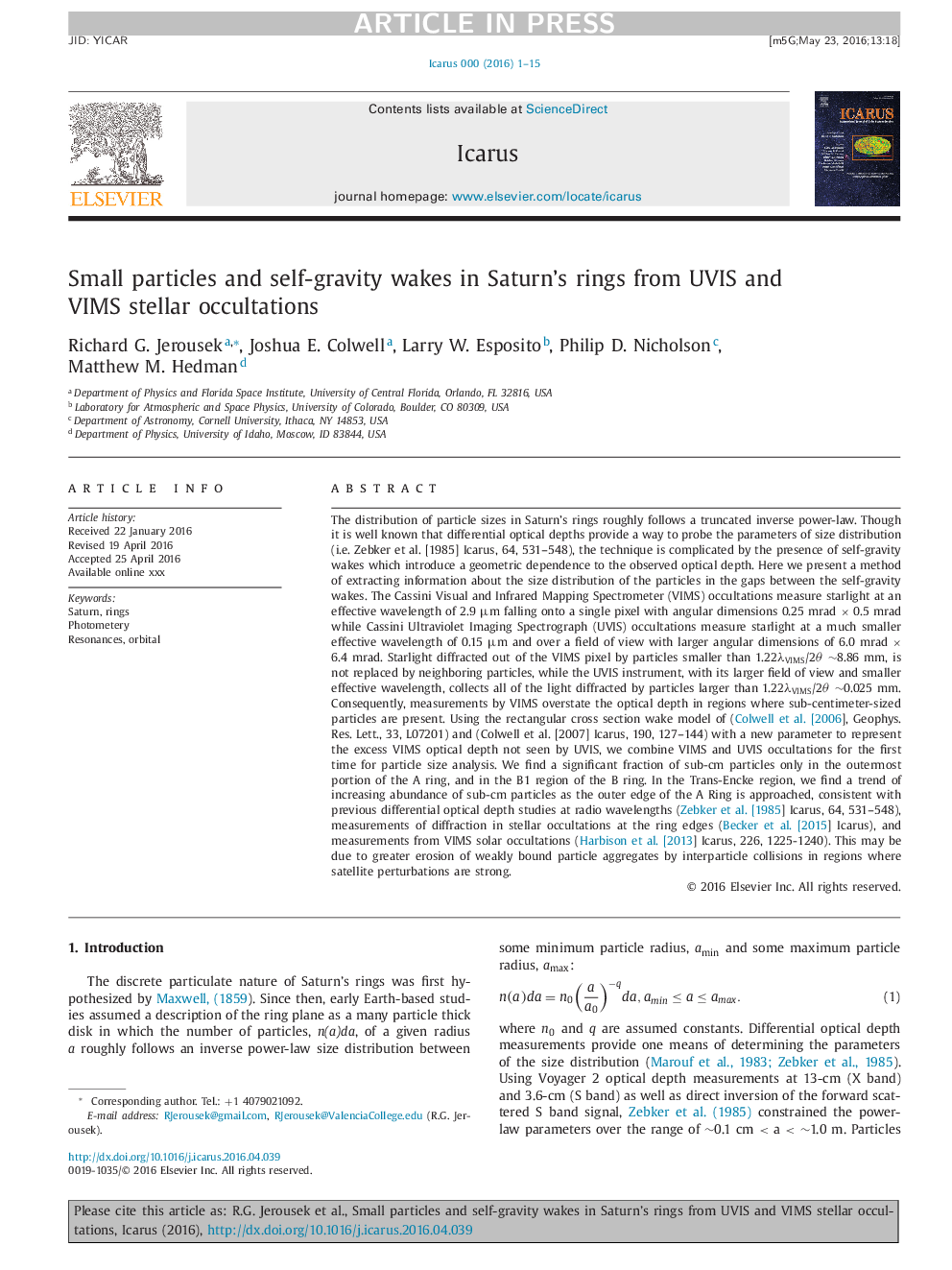| Article ID | Journal | Published Year | Pages | File Type |
|---|---|---|---|---|
| 8134740 | Icarus | 2016 | 15 Pages |
Abstract
The distribution of particle sizes in Saturn's rings roughly follows a truncated inverse power-law. Though it is well known that differential optical depths provide a way to probe the parameters of size distribution (i.e. Zebker et al. [1985] Icarus, 64, 531-548), the technique is complicated by the presence of self-gravity wakes which introduce a geometric dependence to the observed optical depth. Here we present a method of extracting information about the size distribution of the particles in the gaps between the self-gravity wakes. The Cassini Visual and Infrared Mapping Spectrometer (VIMS) occultations measure starlight at an effective wavelength of 2.9 µm falling onto a single pixel with angular dimensions 0.25 mrad à 0.5 mrad while Cassini Ultraviolet Imaging Spectrograph (UVIS) occultations measure starlight at a much smaller effective wavelength of 0.15 µm and over a field of view with larger angular dimensions of 6.0 mrad à 6.4 mrad. Starlight diffracted out of the VIMS pixel by particles smaller than 1.22λVIMS/2θ â¼8.86 mm, is not replaced by neighboring particles, while the UVIS instrument, with its larger field of view and smaller effective wavelength, collects all of the light diffracted by particles larger than 1.22λVIMS/2θ â¼0.025 mm. Consequently, measurements by VIMS overstate the optical depth in regions where sub-centimeter-sized particles are present. Using the rectangular cross section wake model of (Colwell et al. [2006], Geophys. Res. Lett., 33, L07201) and (Colwell et al. [2007] Icarus, 190, 127-144) with a new parameter to represent the excess VIMS optical depth not seen by UVIS, we combine VIMS and UVIS occultations for the first time for particle size analysis. We find a significant fraction of sub-cm particles only in the outermost portion of the A ring, and in the B1 region of the B ring. In the Trans-Encke region, we find a trend of increasing abundance of sub-cm particles as the outer edge of the A Ring is approached, consistent with previous differential optical depth studies at radio wavelengths (Zebker et al. [1985] Icarus, 64, 531-548), measurements of diffraction in stellar occultations at the ring edges (Becker et al. [2015] Icarus), and measurements from VIMS solar occultations (Harbison et al. [2013] Icarus, 226, 1225-1240). This may be due to greater erosion of weakly bound particle aggregates by interparticle collisions in regions where satellite perturbations are strong.
Keywords
Related Topics
Physical Sciences and Engineering
Earth and Planetary Sciences
Space and Planetary Science
Authors
Richard G. Jerousek, Joshua E. Colwell, Larry W. Esposito, Philip D. Nicholson, Matthew M. Hedman,
